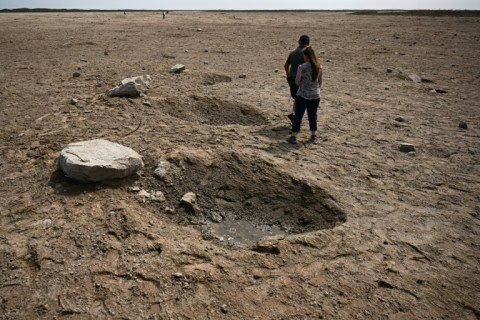
STARBASE - Flying chunks of concrete, twisted metal sheets, craters blasted deep into the ground: the thunderous power of SpaceX's first test flight of Starship -- the biggest and most powerful rocket ever built -- inflicted serious damage on its Texas launch site.
Repairing the damage from Thursday's unmanned test flight is expected to take months, potentially delaying further launch attempts and slowing the development of a rocket NASA plans to use on its upcoming Moon missions.
SpaceX boss Elon Musk had said before the test that just getting Starship in the air without destroying its launch pad would be "a win."
Luckily for Musk, the 120m rocket successfully lifted off, climbing for about four minutes until it tumbled and exploded, well over the Gulf of Mexico.
But SpaceX engineers may have underestimated the damage that Starship's 33 first-stage rocket engines would do.
A few days later, the scene around the launch pad is one of desolation, an AFP photographer saw.
During takeoff, SpaceX video showed a hail of debris being blasted as far as the Gulf of Mexico, over 420m away. According to local press reports, a cloud of dust floated over a small town several kilometres away.
Photos of the launch site show the gigantic launch tower still standing while the rocket mount, which supports Starship before liftoff, damaged but still intact.

Beneath it, however, lies a huge crater, images posted on social media showed.
"The force of the engines when they throttled up may have shattered the concrete, rather than simply eroding it," Musk conceded Saturday on Twitter -- another company in his portfolio.
After Thursday's test, Musk said that SpaceX had begun building "a massive water-cooled steel plate to go under the launch mount."
But it "wasn't ready in time," and engineers "wrongly" calculated that the pad could still withstand the test.
Known for audacious goal-setting, Musk estimates that a next launch attempt could be carried out as soon as "one to two months."

